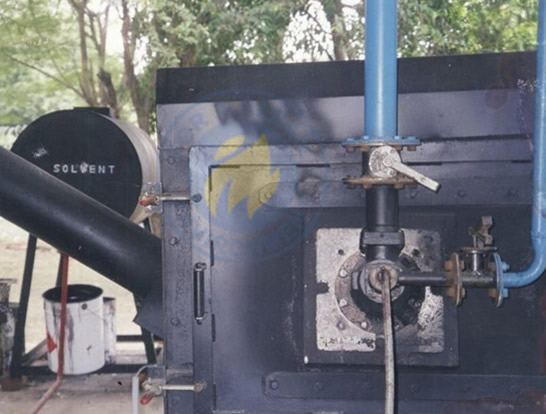
Spent Solvent Incinerator
There was a case of a multi-product company facing the problem of disposing of spent solvents. This particular waste cannot just be wished away or dumped anywhere. Of course, it can vaporise, but at its own pace but in the process is very toxic to humans and the atmosphere.
The waste was generated during the process of printing of product labels, literature, etc. and the customer had accumulated a large quantity of this waste, being unable to find a workable and self-sustaining solution. He was very keen that the process of disposal should not cause any damage to the environment and the treated air should be free of pollutants including the solvent itself.
The customer did not want to spend a lot of money in running costs, even though he was willing to make the initial investment for the incinerator.
We considered this problem in detail and finally came up with a workable solution. Our suggestion was to offer a liquid waste incinerator which would burn this waste using the waste itself as a fuel. Solvents do have a high calorific value but the problem was to design a burner which would take this fuel and burn it efficiently.
Any monoblock burner would not do this job as the solvents contain particulates and other waste materials which would clog the burner.
The trick was to find a way of atomising the solvent using air before igniting it.
We discussed this with a few burner manufacturers/suppliers and came up with a special design where combustion air was added to the solvent and the mixture was made to swirl around at a decent pressure before being released through special nozzles and getting ignited at the point of entry to the combustion chamber.
This was not a simple solution as the mixture had to be distributed around the chamber with the same pressure for uniform burning.
We tested the efficiency of the system as well as the emissions and found them to be quite satisfactory.
The solution thus offered helped the customer to solve his long pending waste problem and provided an on-going remedy to the waste developed during the production of their end product.


